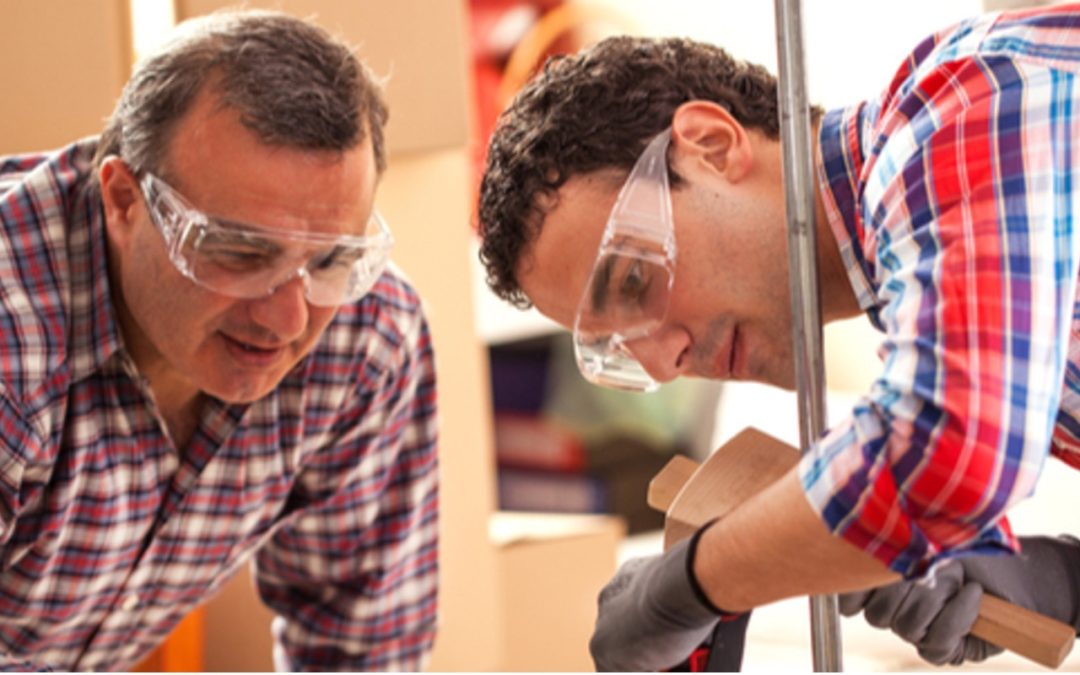What is Personal Protective Equipment?
Personal protective equipment, or PPE, is designed to protect employees from serious workplace injuries or illnesses resulting from contact with chemical, radiological, physical, electrical, mechanical, or other workplace hazards.
Hazard Assessments
Regulations require employers to conduct hazard assessments of the workplace to determine what hazards are present that require the use of PPE, provide workers with appropriate PPE, and train employees to use and maintain it in a clean and reliable condition.
Eye and Face Injuries
Thousands of people are blinded each year from work-related eye injuries that could have been prevented with the proper selection and use of eye and face protection. Eye injuries alone cost more than $300 million per year in lost production time, medical expenses, and worker compensation. Safety glasses, goggles, helmets, and face shields can protect employees from the hazards of flying fragments, large chips, hot sparks, and splashes, as well as objects, particles, sand, dirt, mists, dust, and glare. The type of eye or face protection required depends on the hazard.
Filtered Lenses
Eye and face protection with filter lenses are required where there is a potential of being exposed to injurious light radiation, such as welding and work with lasers.
Safety Glasses
Safety glasses effectively protect the eye from solid materials (dust and flying objects) but are less effective at protecting the eyes from chemical splashes.
Use safety glasses for general working conditions where there may be minor dust, chips, or flying particles.
Use safety glasses with side protection such as side shields or wraparound style where there is a potential of being struck by projectile flying objects such as:
- Chiseling
- Drilling
- Machining
- Milling
- Fastening (e.g., staple guns)
- Grinding or abrasive wheels
- Cutting (e.g., power saws)
- Power actuated tools
- Turning
- Use safety glasses treated for anti-fog.
- Use an eyewear retainer to keep the glasses tight to the face or hanging from the neck if not in use.
It is required to provide eye protection for employees engaged in activities that produce objects which may enter the eye. While employers are not required to purchase prescription safety glasses, there is a policy for providing such eyewear. Also, the employer may provide an alternate type of eye protection (e.g., goggles) instead of purchasing prescription safety glasses.
Fit, Care, and Maintenance
- Ensure your eye protection fits properly. Eye size, bridge size, and temple length all vary. Safety glasses should be individually assigned and fitted.
- Wear safety glasses so that the temples fit comfortably over the ears. The frame should be as close to the face as possible and adequately supported by the bridge of the nose.
- Clean eye protection daily according to the manufacturer’s instructions. Avoid rough handling that can scratch lenses, which impair vision and weaken lenses.
- Store eye protection in a clean, dry place where they cannot fall or be stepped on. Keep them in a case when they are not being worn.
- Replace scratched, pitted, broken, bent, or ill-fitting eye protection with identical parts from the original manufacturer to ensure the same safety rating.
Goggles
Goggles should be worn in situations where there is potential for chemical fumes, splashes, mists, sprays, or dust exposure to the eyes. Chemical goggles form a liquid-proof seal around the eyes, protecting them from splashes.
- Goggles for splash or fine dust protection should have indirect venting. Use direct vented goggles for less fogging when working with large particles.
- Safety goggles designed after ski type goggles with high air flow minimize fogging while providing better particle and splash protection.
Face Shields
Goggles with a face shield are required when handling highly reactive substances or large quantities of hazardous chemicals, corrosives, poisons and hot chemicals, projectiles, or radiant energy. Face shields are not a substitute for eye protection. Always wear safety glasses or goggles under a face shield.
- Use face shields for highest impact, full face protection for spraying, chipping, grinding, and critical chemical or biohazards.
- Face shields may be tinted or metal coated for heat and splatter protection.
- The curve of the face shield will direct particles or chemicals coming from the side into the eyes.
Spencer-SHE has been providing Safety, Health, and Environmental Compliance Guidance since 1980. Protect your employees and meet OSHA face shield requirements, along with other PPE standards, by contacting us at http://www.spencer-she.com/contact/. We are here to help businesses implement safety plans that prevent workplace injuries.
Sources:
https://s3.wp.wsu.edu/uploads/sites/1384/2016/07/FAQPPEeye-face.pdf
https://www.osha.gov/laws-regs/regulations/standardnumber/1910/1910.133
https://www.safetybydesigninc.com/osha-eye-and-face-protection-safety-requirements-and-tips/

